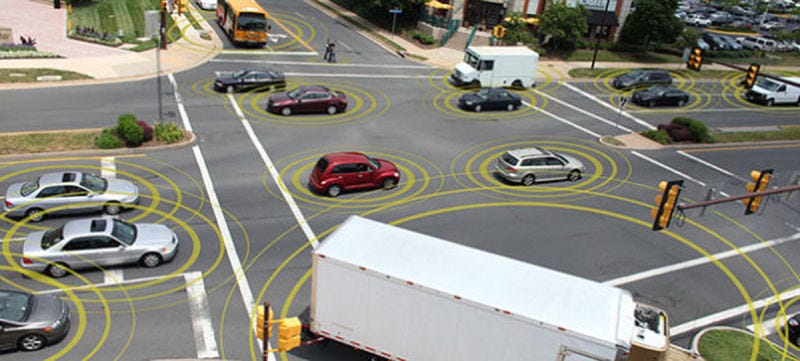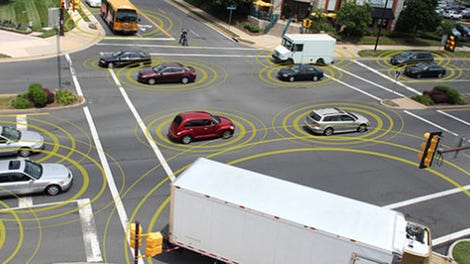
Driverless cars promise to save lives by driving better than constantly-texting, easily-distracted, sometimes-even-intoxicated humans, but—like any married couple knows—the cars can’t reach their true potential if they don’t communicate with each other.
Human senses are still better than the radars, lidars and cameras in driverless cars when it comes to things like classifying objects, edge detection, lane tracking and visibility range, according to a new report out of the University of Michigan’s Sustainable Worldwide Transportation research team. The study concluded human drivers are still better at reasoning, perception and overall sensing while driving compared to today’s driverless cars.
The best potential replacement for a human driver is employing a combination of two things: different types of car sensors, or what’s called “sensor fusion,” and connected vehicle technology. The latter allows cars to communicate things like roadway conditions or obstructions to other cars over a network.
Advertisement
This connection’s useful when, say, there’s a car crash three cars ahead of you; that’s too far away for a car’s sensors to detect, but can easily be communicated longer distances over a network. The network can be either cellular or a part of the radio frequency spectrum, in what’s called Dedicated Short-Range Communication.
“To really have the best possible integration of an autonomous vehicle you need to have the connected DSRC involved so the vehicles can talk to each other instead of sort of having to see and sense their way through the world,” Brandon Schoettle, project manager at Sustainable Worldwide Transportation who authored the study, said in an interview with Jalopnik.
Advertisement
Since connected vehicles don’t need to be autonomous, the two technologies have been developing for around the same amount of time but without much integration, Schoettle said. Soon, however, companies will likely start integrating the two components given the tremendous safety benefits from connected vehicle tech. The U.S. government flirted with the idea of requiring all cars talk to each other by 2023 in 2016, though the Trump administration hasn’t moved forward on the requirement.
There’s a big issue if connected cars are truly vital to the driverless car future, there’s one big problem: privacy. Hackers will have a hayday breaking into networks to steal car (and driver) data if everything isn’t secure. Schoettle researchers are making sure the cybersecurity surrounding V2V tech is solid, but carmakers only started looking into the issue and many cars are still laughably easy to hack into.
“It’s a serious issue that could be a problem if it’s not solved, but I think a lot of time and energy is being spent to really focus on that cybersecurity aspect and making sure they do that right,” Schoettle said.


















